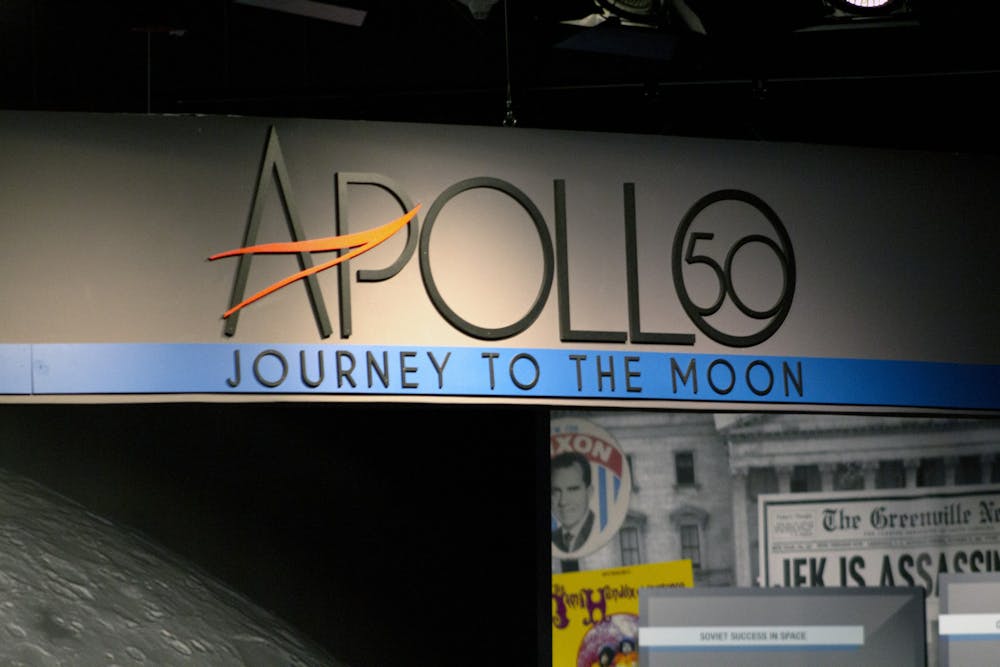It has been 50 years since "one small step for man, one giant leap for mankind," when the world gathered around its TV sets to watch history unfold. An estimated 600 million people watched as Neil Armstrong and Buzz Aldrin became the first men to walk on the moon.
The South Carolina State Museum is celebrating that once un-thinkable accomplishment with their exhibit Apollo 50: Journey to the Moon. Currently a changing exhibit, parts of the immersive exhibition will become permanent, Science and Technology Curator Meredith Nichter said.
The museum strives to highlight South Carolinians, especially those involved with the Apollo program, and NASA as a whole with its most recent exhibition.
"I love how this exhibit really shows that it's not just the crew that went into space, but such a team behind them that made it happen. And there are a lot of South Carolina connections in the background," Nichter said.
The space that houses the Apollo 50 exhibit was recently cleaned out from the museum's opening in 1988.
"We actually changed the physical space in that area that included putting up a new entrance to that gallery," said Marketing Director Jennifer Thrailkill.
At the entrance to the exhibit, visitors are greeted by a video of President Kennedy's famous 1962 "We Choose to Go to the Moon” speech that took place in a time when there were many unanswered questions about the Space Race and what it would look like for America. Seven years later, Apollo 11 was launched from Cape Canaveral, Florida, taking astronauts Neil Armstrong, Buzz Aldrin and Michael Collins to the moon.
According to Tom Falvey, Director of Education, "the fact that South Carolina does have a Moonwalker," Charles Duke, makes this story so important to the State Museum.
"There are so few people who actually walked on the moon. It's amazing to think of one of those folks grew up in a small town in South Carolina," Falvey said.
The South Carolina natives— astronaut Charles Duke, photographer Milt Putnam and recovery diver Bob Coggin— are all prominently featured in the exhibit to highlight the lasting impact South Carolina has on the country's space program.
Raised in Lancaster, Charles Duke was the 10th man to walk on the moon when he piloted the Apollo 16 mission. He is also known for exposing the crew of Apollo 13 to rubella, forcing members of the back-up crew into space. Nearly the entirety of Duke's collection of Apollo objects were donated to the State museum, according to Falvey.
Bob Coggin, a "Navy seal that helped with the recovery" from Charleston, was a recovery diver for the Apollo 8 mission. Apollo 8 was the first manned aircraft to leave Earth's atmosphere and orbit the moon, where Coggin would meet the three astronauts when they splashed down in the middle of the Pacific.
Milt Putnam took the official photographs of the Apollo 8, Apollo 10 and Apollo 11 recoveries. Stationed on the USS Hornet, Putnam took the famous photo of Armstrong, Aldrin, and Collins relaxing in a life raft.
The state museum is dedicated to allowing it's visitors access, wherever they may be.
"We have an actual online version of this exhibit that now exists in 360 . . . It's now time to also try and offer online and onsite resources for people who may not be able to come to the museum right now," Thrailkill said. "This particular exhibit is a really good example of the quality type of content that the state museum can provide."
When you think about the Space Race, states like Texas and Florida where NASA is headquartered come to the forefront of people's minds. With the State Museum exhibit, however, South Carolina is finally getting the recognition it deserves.

